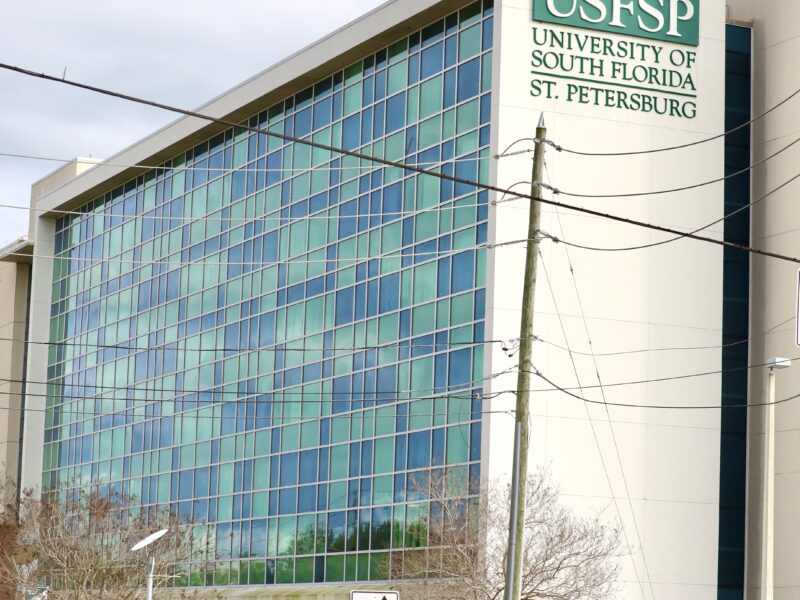 Students in the cafeteria stopped to watch what was unfolding on the video wall in the University Student Center. The screens were set to HLN news. Table talk stopped mid-sentence, as the lunchtime crowd looked up, transfixed by footage of a skunk with a mayonnaise jar stuck on his head.
Students in the cafeteria stopped to watch what was unfolding on the video wall in the University Student Center. The screens were set to HLN news. Table talk stopped mid-sentence, as the lunchtime crowd looked up, transfixed by footage of a skunk with a mayonnaise jar stuck on his head.
The skunk’s casual walk into a wall (jar-first) broke the silence, which sent students howling with laughter. Satisfied, they resumed their focus to their lunch plates and chitchat.
While the nine-paneled digital video wall in USC is plugged in, students have yet to see the full potential of the $180,000 installation.
Office techs from MCS, a Florida-based technology firm, have been upstairs in the audiovisual room for the past few weeks coding, programming and devising layout before training USC staff how to use the wall.
Unofficially referred to as a “wow-wall,” current displays have been rather simple, with an analog clock and stills of the university.
“That’s the big misconception. It’s not up and running,” said Dwayne Isaacs, assistant director of the University Student Center.
They’re in a beta-phase now, but expect to be trained how to run the system within the next few weeks.
The video wall works like a computer—content is uploaded and displayed, whether it is video, audio, photography or graphic designs.
The purpose of the display is to keep students informed in the building that aims to be the center of the university. In the future, students who wish to advertise extracurricular clubs or teams will be able to use the wall, which will have about 14 hours of time to fill each day.
Although USC directors have ideas for the wall, including football watch parties and airing the upcoming presidential debates, they extend an open invitation for students to take up the opportunity the screens will soon provide.
“We’re two weeks old, so people are still learning how to use the space,” Isaacs said.
The nine LG screens hardly make up the $180,000 price tag for the wall—the cost is mostly for the technology behind it, said Matt Morin, director of Student Affairs.
USF’s Marshall Student Center in Tampa has 19 display screens and one LED wall. Isaacs, who was formerly the facility manager at the center, said the technology isn’t as advanced as the video wall at USFSP.
Isaacs recalled the only trouble with the feature wall and others was students’ content unable to fit the parameters of the technology. Now, the Marshall Student Center website offers graphic specifications for creating a screen display.
When the set-up of the video wall is complete, content will be uploaded remotely.
With 550 students with meal plans, commuters and faculty using the center, Isaacs and Morrin are interested in the possibilities the video wall has to inform and connect passersby.
Photo by Thomas Boyd


